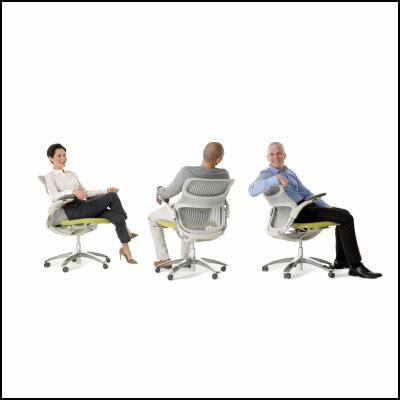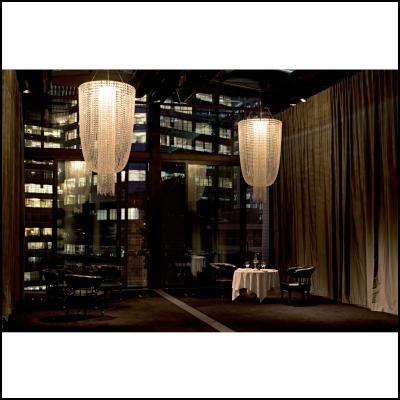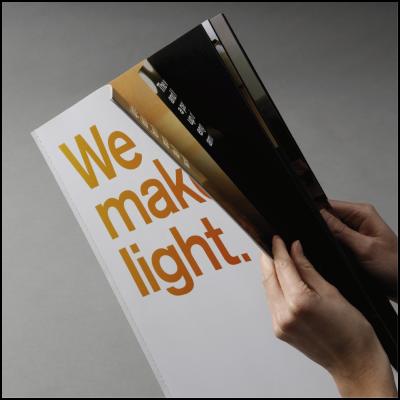Designers Delight and Dazzle at NZ’s 2009 Awards

Click to enlarge
Media
Release
Monday October 19,
2009
Designers Delight and Dazzle at New Zealand’s 2009 BeST Design Awards
Orthopedic gumboots, an elastic chair, a restaurant up a tree, a sheep drencher inspired by a beer bottle, the world’s safest trampoline and a coat stand shaped like a twig were among some of the most colourful high profile winners at the national 2009 BeST Design Awards – New Zealand designs equivalent to the Oscars.
Organised by the Designers Institute of New Zealand (DINZ), the awards celebrate the very best of New Zealand design across the disciplines of product, spatial (interiors) and graphics, and were presented at a glamorous dinner and after party - attended by 500 of the country’s top designers - at the Auckland Museum on Friday, October 16.
This year, an impressive 590 entries were received for the awards, the second highest ever since the awards were established 21 years ago.
Cathy Veninga, CEO of the Designers Institute said that DINZ was extremely encouraged by the number of entries, as this year had been incredibly challenging for both the design industry and its clients. The standard in all disciplines, she said, had been extremely high.
Veninga said a significant number of companies were now using design as a smart business tool.
“These companies recognise that an investment in design is one of the most effective ways to differentiate themselves and their products in what is a very competitive marketplace.
“Design is a critical business factor. Along with good financial management, marketing and good branding, you have to have a design component or you are not delivering at a global standard.”
For the second year running, Lower Hutt based furniture designers, Formway and Ponsonby based ideas company, Alt Group, picked up two of the three Stringer awards (the Supreme award in each discipline), with the third Stringer going to Auckland’s Fearon Hay Architects.
The Product Stringer was presented to Formway for their Be Chair, a flexible chair which bends and moves with its user thanks to an innovative type of plastic that until now was mainly used in car suspension systems.
Fearon Hay took the Spatial Design Stringer for their innovative design of the Wintergarden at Auckland’s Northern Club, while Alt Group, who have had a hugely successful international awards season having picked up over 31 international awards this year alone, took home the Graphic Design Stringer for their Selecon brand book, We Make Light.
In addition to their Stringer win, Alt Group retained their title as the most awarded company at the awards, bringing home a total of 25 prizes at this year’s prestigious design event.
New Zealand’s world famous type font designer, 75 year old Samoan born Joseph Churchward was presented with the John Britten Award, the highest recognition given by DINZ to reward leadership, vision and achievement in the design industry in New Zealand. Joseph Churchward’s hand designed typefaces are seen on optician’s charts around the world and before he retired earlier this year, he had hand crafted more than 600 typefaces – more than any other person in the world - some of which took up to 300 hours to complete.
Well known and respected designer Dave Clark, who has twice been president of DINZ, was presented with the Designers Institute’s Outstanding Achievement Award for his contribution to the New Zealand design industry.
Other standout winners at this year’s preeminent design awards included:
* Quatro
Gumboots
Christchurch’s InFact Limited and
Skellerup Industries took home silver for the design of the
Quatro Gumboot - New Zealand’s first high-performance
agribusiness gumboot.
Quatro features an orthopaedic innersole, an antibacterial insulated lining, a shock absorbing inner foot bed, an elasticised soft rim to prevent debris falling inside the boot, and drafted cleats on the outer sole – inspired by a tractor tyre and designed to release mud.
* Queenies Lunchroom
Situated on a snug corner site in Auckland’s Freemans
Bay, Queenies was awarded a hospitality design gold at this
year’s awards.
The interior of Queenies, designed by Natalie Snowden of Clark Brown Architects, is built around several collected pieces, such as an antique marble butcher’s table, coca-cola boxes and deer antler chandeliers, which are complimented by a green custom-built vinyl and marble counter, a painted checkerboard floor, zinc-topped tables, and a huge paint-by-numbers mural.
The judges of the awards described Queenies as a “fantastical space that takes Kiwiana to the next level.”
* Christchurch Bus Exchange Transit
Lounge, which opened in February, 2009, is housed
in a converted retail space and was designed to ease
footpath congestion.
Featuring brightly coloured heated
concrete seats and saturated with light thanks to expansive
light walls, the judges praised the design of the lounge
saying the designers had “powerfully transformed what was
a tough environment into a bold yet calming
space”.
* Retail advertising agency,
.99, was awarded gold in the workplace
category.
Designed by Richard Naish of RTA studio, the
brief was to transform an old warehouse in Grey Lynn into a
“non wanky” office, and one that reflected the type of
work that the agency is involved in – retail
advertising.
Everyday retail materials are used throughout the office - the reception desk is built from a burnished steel plate, with a large wall created from stacked cardboard.
The undulating cardboard wall - a feature in the agency - has a series of shapes cut out of it, such as the .99 logo, and is curved to reflect the curvaceous form of a mannequin.
The “street” or hall of the office with its recycled rubberwood floor tiles, splits enclosed meeting spaces from the open plan studio floors through the use of cold-store rubber strips. Plastic strips, hung in a circle, also form “pods” which are used for creative brainstorming and informal meetings.
The BeST Design Awards were established in 1988 and have been held annually since 1996.
www.bestawards.co.nz
ENDS
Notes to Editors
Product Design Stringer – the Be Chair by Formway
Be, the latest
development from award-winning Lower Hutt based furniture
manufacturer Formway, is the world’s first multi-posture,
multi-task chair that responds and adapts to the way people
sit and move.
Be was developed after four years of
intense research and groundbreaking engineering revealed
that the unconventional postures people move in and out of
during their working day are in fact important and typical
postures that have not been well supported in traditional
office chairs.
To enable it to move and support multiple
postures, it has a patented flexible back - comprised of a
special plastic typically seen in car suspension systems -
that folds to provide a temporary arm support, with flexible
edges on its front and sides.
The judges of the awards,
led by Professor Tony Parker, Head of the Institute of
Design for Industry and the Environment at Wellington’s
Massey University, described Be as “world class” and
“an exemplary piece of furniture design.”
“This
next generation work-chair displays very high levels of
comfort, flexibility, striking design, durability and
sustainability,” said Professor Parker.
“Be moves
office task chair seating to a whole new level.”
In
addition to taking top honours at the BeST Design Awards,
Be, which has been licensed to leading global furniture
manufacturer Knoll, recently bet off stiff international
competition to take home Gold at the NeoCon tradeshow in
Chicago - the largest and most important furniture industry
trade show in the United States.
Spatial Design Stinger – the Wintergarden at the Northern Club

Click to enlarge
The Northern Club in Auckland was founded by a group of prominent business men in 1867 when the popularity of private members’ clubs was at its peak. The Club has survived several waves of central city development and now sits proudly on its corner site wearing a distinctive cover of Virginia creeper.
But the Club needed more space and design company, Fearon Hay Architects, was engaged to provide an expanded and flexible capacity in a development which would equal or improve the identity of the current Club, while conforming to a number of strict heritage requirements.
In the Club’s Wintergarden, Jeff Fearon created a series of interior spaces and courtyards which are lightly enclosed with glazed and screened layers to complement the ivy covered masonry of the existing Clubhouse.
The judges, led by spatial convenor Paul van Lent, said: “The Wintergarden, as an annexe to a historic building, translates a tone of formality from one building to the other in a stark but complementary manner.
“This design has been achieved in a brave way and there is a real sense of drama in the new space. When you arrive at the club you are greeted with a formality, and this formality has been carried through in the new annexe although it has a completely different palette. This rigour has been carried through into the new building, but it is still unified.”
The architects, said Paul van Lent, had achieved the unity through a “veiling” effect. The original building is veiled in ivy and creepers, and the architects had added a steel grille to the exterior of the new addition to give a separate veiling effect. Another stand out feature is the glass louvered roof, which provides light throughout the day and a feeling of space.
Graphic Design Stringer – Selecon Brand Book

Click to enlarge
Selecon is an Auckland based theatre and architectural lighting design and manufacturing company which distributes its products across Europe, United States, Asia and Australia.
The Selecon brand book, which won a Stringer for Ponsonby based design consultancy, Alt Group, was part of a complete identity project, rolled out domestically and internationally and which included a broad range of internal and external communications, project collateral, website, print advertising, trade show materials, presentations and packaging. When Selecon was acquired by international lighting giant Phillips earlier this year the book became a key piece in helping the company to communicate its brand.
The idea that formed the basis of the project is “We Make Light.” The book communicates the company’s history, brand values and offerings and serves as a reference point for all external communication. Language, such as “Light that Makes you Look” and “One solution. Multiple choices”, and photography were an important part of the communications.
The judges, led by graphic convenor Fraser Gardyne said:
“A tactile, light filled and crafted tour de force
that shows print is not dead and demonstrates the power of
words and images when wrapped around a single
idea.
“The quality of the product and the mood it is
able to bring are clearly communicated
throughout.”


 SolarZero: SolarZero Limited (in Liquidation) - Important Business Update
SolarZero: SolarZero Limited (in Liquidation) - Important Business Update Science Media Centre: Cyclone Gabrielle's Impacts On NZ's Ecosystems - Expert Reaction
Science Media Centre: Cyclone Gabrielle's Impacts On NZ's Ecosystems - Expert Reaction RNZ: Parts Of Power System Could Be Out For 36 Hours In Event Of Extreme Solar Storm
RNZ: Parts Of Power System Could Be Out For 36 Hours In Event Of Extreme Solar Storm NZAS: New Zealand Association Of Scientists Awards Celebrate The Achievements Of Scientists And Our Science System
NZAS: New Zealand Association Of Scientists Awards Celebrate The Achievements Of Scientists And Our Science System Stats NZ: Retail Spending Flat In The September 2024 Quarter
Stats NZ: Retail Spending Flat In The September 2024 Quarter Antarctica New Zealand: International Team Launch Second Attempt To Drill Deep For Antarctic Climate Clues
Antarctica New Zealand: International Team Launch Second Attempt To Drill Deep For Antarctic Climate Clues



